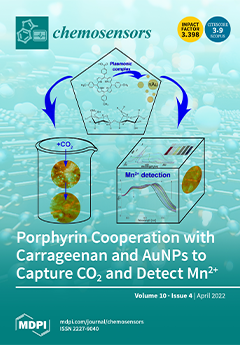Perfluoroisobutyronitrile (C
4F
7N), an environment-friendly insulating gas, has excellent insulating properties and has the potential to be used in gas-insulated equipment when mixed with CO
2. Selecting suitable adsorption materials to adsorb the decomposition products of the C
4
[...] Read more.
Perfluoroisobutyronitrile (C
4F
7N), an environment-friendly insulating gas, has excellent insulating properties and has the potential to be used in gas-insulated equipment when mixed with CO
2. Selecting suitable adsorption materials to adsorb the decomposition products of the C
4F
7N mixture can ensure the safe and stable operation of the gas-insulated equipment and the personal safety of the operators in the electric power industry. The adsorption characteristics of the ZSM-5 molecular sieve on C
4F
7N and its five fluorocarbon decomposition products were investigated by adsorption experiments. The results show that the ZSM-5 molecular sieve has a certain adsorption effect on six fluorocarbon gases; the adsorption performance of C
3F
6 and C
3F
8 are the best, with an adsorption efficiency over 85%, while the concentration of CO
2 and C
4F
7N is affected by the ZSM-5 molecular sieve. At the same time, the paper based on the Metropolis Monte Carlo simulation of Materials Studio software found that the ZSM-5 molecular sieve has the strongest adsorption effect on C
4F
7N molecules and the weakest adsorption effect on CO
2 molecules. The stronger the polarity of the gas molecule, the more obvious the adsorption effect of molecular sieve structure on it. As a result, the ZSM-5 molecular sieve could be used in tail gas purification of insulated equipment, as well as to provide solutions for the development and production of protective equipment.
Full article





